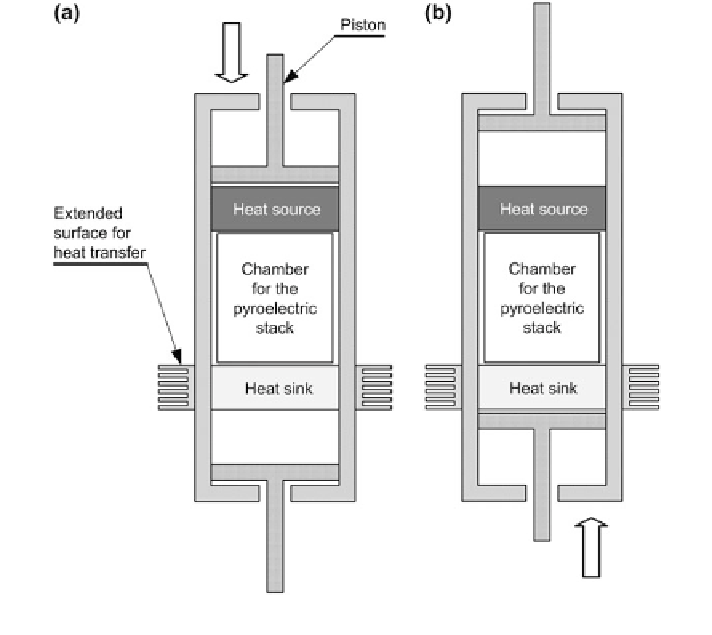Environmental Engineering Reference
In-Depth Information
Fig. 10.22 Pyroelectric energy converter that employs regeneration (see also Olsen et al. [
67
])
effect of the cyclic frequency and the temperature of the heat source on the power
density of the device were investigated. The maximum power density output
achieved was approximately 135 W/L of the pyroelectric material with the fol-
lowing parameters: a heat sink temperature of 40
°
C, a heat source temperature of
eld of 20 MVm
−
1
, a high electric
eld of 50 MVm
−
1
and a
100
°
C, a low electric
frequency of approximately 1 Hz.
In 1981 Olsen et al. [
67
] suggested that in order to increase the ef
ciency of a
pyroelectric energy converter, a heat regeneration process should be employed.
Based on this idea they designed the device that is schematically presented in
Fig.
10.22
. The device consisted of a stack of pyroelectric elements, an electrical
heater (heat source), an aluminium block (heat sink), a Te
uid
pumping system. The pyroelectric stack was put in the housing, which was then
fl
on housing and a
fl
lled with silicone oil. The silicone oil was pumped from the heat sink to the heat
source in an oscillatory manner, creating temperature oscillations in the pyroelectric
elements. To pump the
uid, a piston driven by an electrical motor was used.
Furthermore, in order to achieve the pyroelectric Ericsson cycle, the applied voltage
was controlled as well. The voltage was changed from the low value to the high
value after the piston had moved the
fl
fl
uid from the heat source to the heat sink,

Search WWH ::

Custom Search